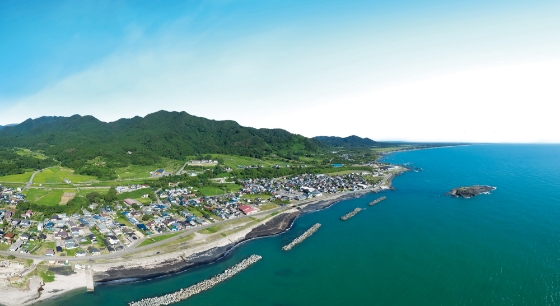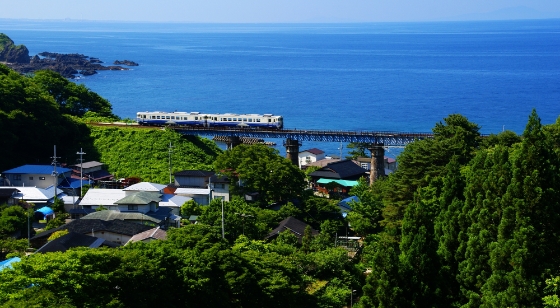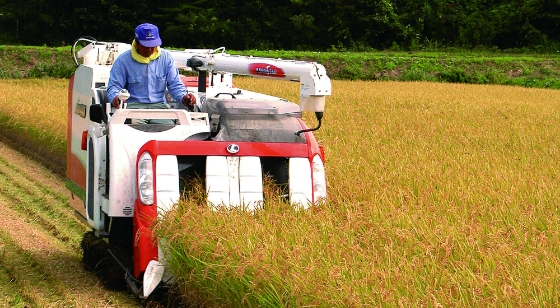I will show you some great sight in our town!
Contact: Happo Tourism Association http://www.happouta.jp/home/
Northern Akita Prefecture has a long history as one of Japan’s most important mining regions, and some of its mines were in operation more than a thousand years ago. Gold, iron, lead, and zinc have been found throughout the area, but silver and copper were the primary metals extracted from the open-pit mining operation called Hassei Mine.
The discovery of silver in Happō is credited to Kudō Jinzaburō,a kimono merchant from the neighboring city of Noshiro. In the late 1880s, Kudō is said to have tapped his metal pipe on a rock to clean the tobacco out of it and noticed a glint of precious metal in the rock. Two years later, silver mining began. In 1907, a blast furnace was built nearby to smelt copper ore.
In 1908, the mine employed 1,365 people and produced more than 5,000 kilograms of silver a year, making it the largest silver mine in Japan at that time. However, operations declined through the first half of the twentieth century, and the mine finally closed in 1952. The blast furnace continued to operate, smelting ore from other mines, until 1989.
During Hassei’s years of operation, mining and smelting activities generated many tons of slag and pulverized black rock. These were disposed of along the nearby coast, a process that gradually turned the sand black. The beaches near the mine still retain this distinctive color.
The former location of Hassei Mine is now Happō Central Park, which opened in 2008. At one end of an open lawn stands a 4.3-meter black-and-gold monument, a one-tenth-scale replica of the main blast furnace chimney.
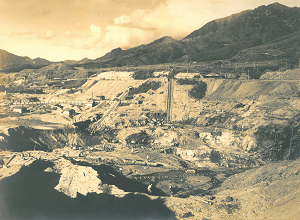
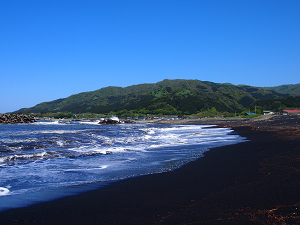
* This English-language text was created by the Japan Tourism Agency

